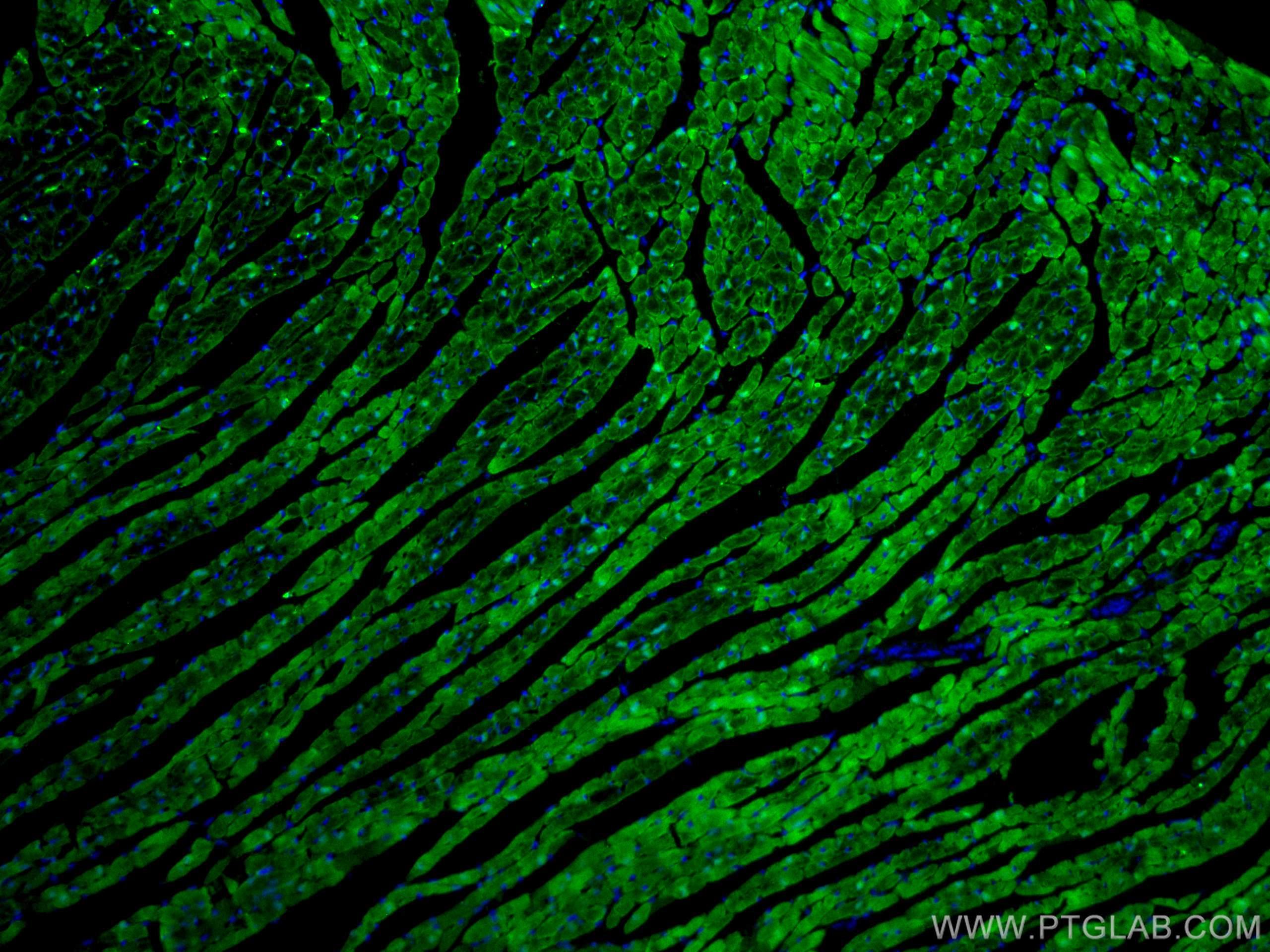Validation Data Gallery
Filter:
Tested Applications
| Positive IF-P detected in | mouse heart tissue |
Recommended dilution
| Application | Dilution |
|---|---|
| Immunofluorescence (IF)-P | IF-P : 1:50-1:500 |
| It is recommended that this reagent should be titrated in each testing system to obtain optimal results. | |
| Sample-dependent, Check data in validation data gallery. | |
Product Information
CL488-60280 targets FABP3 in IF-P applications and shows reactivity with human, mouse, rat samples.
| Tested Reactivity | human, mouse, rat |
| Host / Isotype | Mouse / IgG2a |
| Class | Monoclonal |
| Type | Antibody |
| Immunogen | FABP3 fusion protein Ag21483 相同性解析による交差性が予測される生物種 |
| Full Name | fatty acid binding protein 3, muscle and heart (mammary-derived growth inhibitor) |
| Calculated molecular weight | 15 kDa |
| Observed molecular weight | 15 kDa |
| GenBank accession number | BC007021 |
| Gene Symbol | FABP3 |
| Gene ID (NCBI) | 2170 |
| RRID | AB_2919244 |
| Conjugate | CoraLite® Plus 488 Fluorescent Dye |
| Excitation/Emission maxima wavelengths | 493 nm / 522 nm |
| Form | Liquid |
| Purification Method | Protein A purification |
| UNIPROT ID | P05413 |
| Storage Buffer | PBS with 50% glycerol, 0.05% Proclin300, 0.5% BSA , pH 7.3 |
| Storage Conditions | Store at -20°C. Avoid exposure to light. Stable for one year after shipment. Aliquoting is unnecessary for -20oC storage. |
Background Information
FABP3 (fatty-acid-binding protein 3), also known as heart-type FABP or mammary-derived growth inhibitor (MDGI), is a small 15-kDa cytoplasmic protein transporting fatty acids and other lipophilic substances from the cytoplasm to the nucleus. It is most ubiquitously expressed in heart and skeletal muscle.
Protocols
| Product Specific Protocols | |
|---|---|
| IF protocol for CL Plus 488 FABP3 antibody CL488-60280 | Download protocol |
| Standard Protocols | |
|---|---|
| Click here to view our Standard Protocols |
